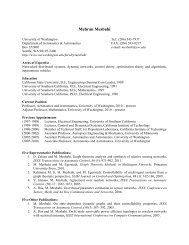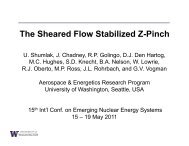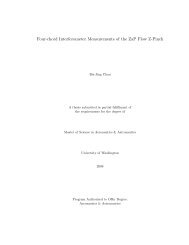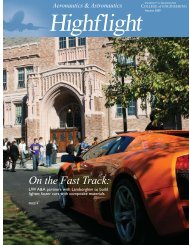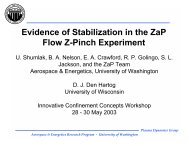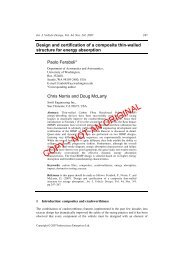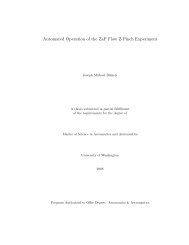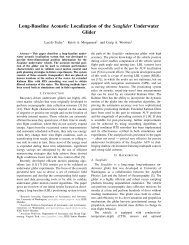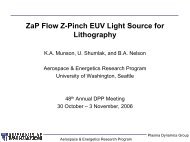Distributed Reactive Collision Avoidance - University of Washington
Distributed Reactive Collision Avoidance - University of Washington
Distributed Reactive Collision Avoidance - University of Washington
You also want an ePaper? Increase the reach of your titles
YUMPU automatically turns print PDFs into web optimized ePapers that Google loves.
18<br />
ṽ ij<br />
d sep,ij<br />
d sep,ij<br />
β<br />
Vehicle j<br />
α<br />
˜r ij<br />
α<br />
Vehicle i<br />
Figure 3.1: A 2D section <strong>of</strong> the collision cone along the ˜r ij -ṽ ij plane. The area between<br />
the two dotted lines is the collision cone; a conflict occurs when the relative velocity vector,<br />
ṽ ij , lies within this area.<br />
Lemma 1. Let β = ∠ṽ − ∠˜r 0 , α = arcsin<br />
( )<br />
dsep<br />
‖˜r 0<br />
and ˜r<br />
‖ 0 be the relative position vector<br />
at the time conflict is being checked. A necessary and sufficient condition for no conflict to<br />
occur is<br />
|β| ≥ α. (3.3)<br />
The angle α represents the half-width <strong>of</strong> the collision cone ([7, 8, 10]), which is depicted<br />
in Fig. 3.1.<br />
Pro<strong>of</strong>. First, define ˜r min as the position vector corresponding to the closest approach <strong>of</strong><br />
one vehicle to another in (3.2). By definition, at ˜r min the time derivative <strong>of</strong> ‖˜r‖ 2 = 0.<br />
Therefore:<br />
Next, note that for constant velocity, ṽ:<br />
d (˜rT˜r ) = 0<br />
dt<br />
ṽ T˜r min = 0. (3.4)<br />
˜r min = ˜r 0 − ṽt, (3.5)



